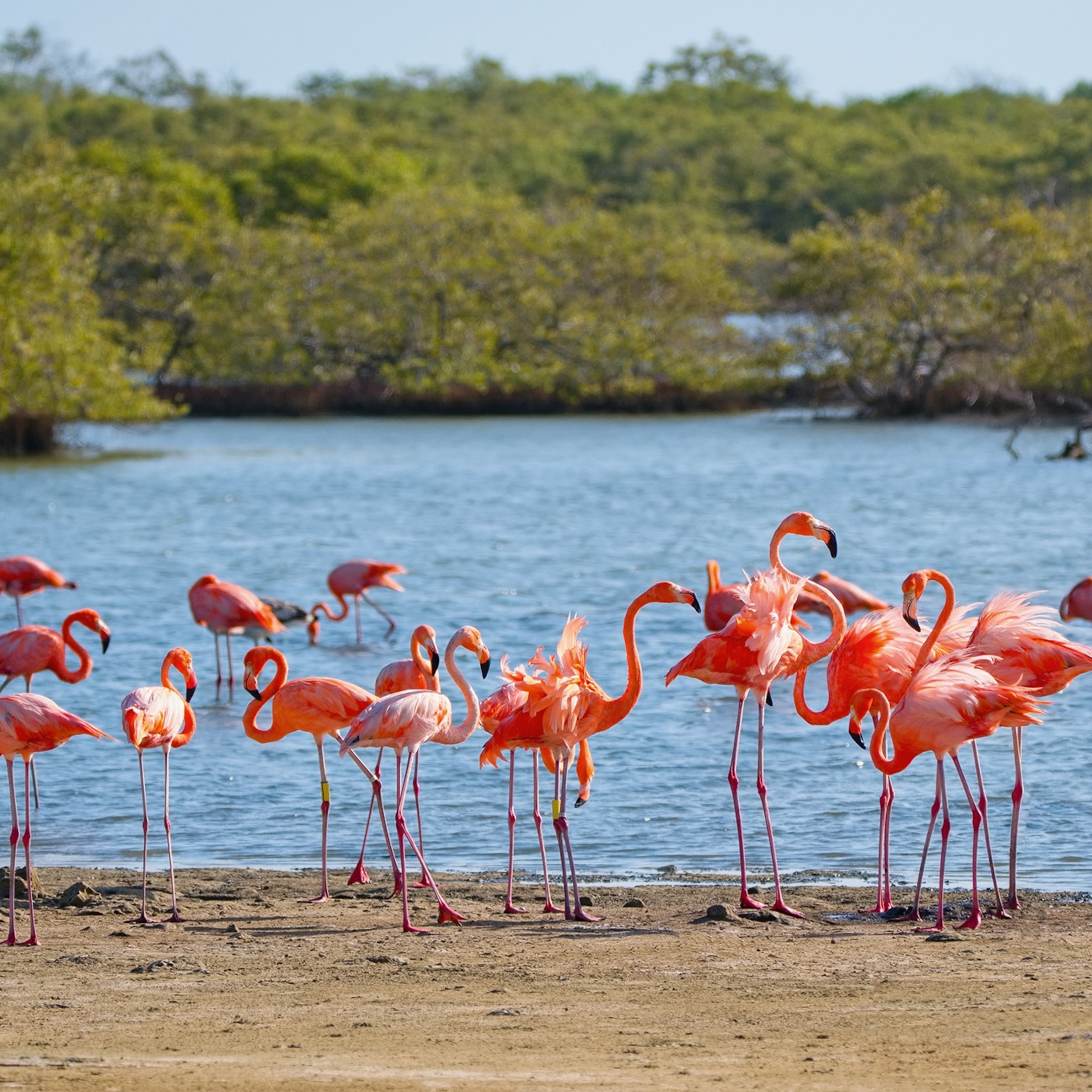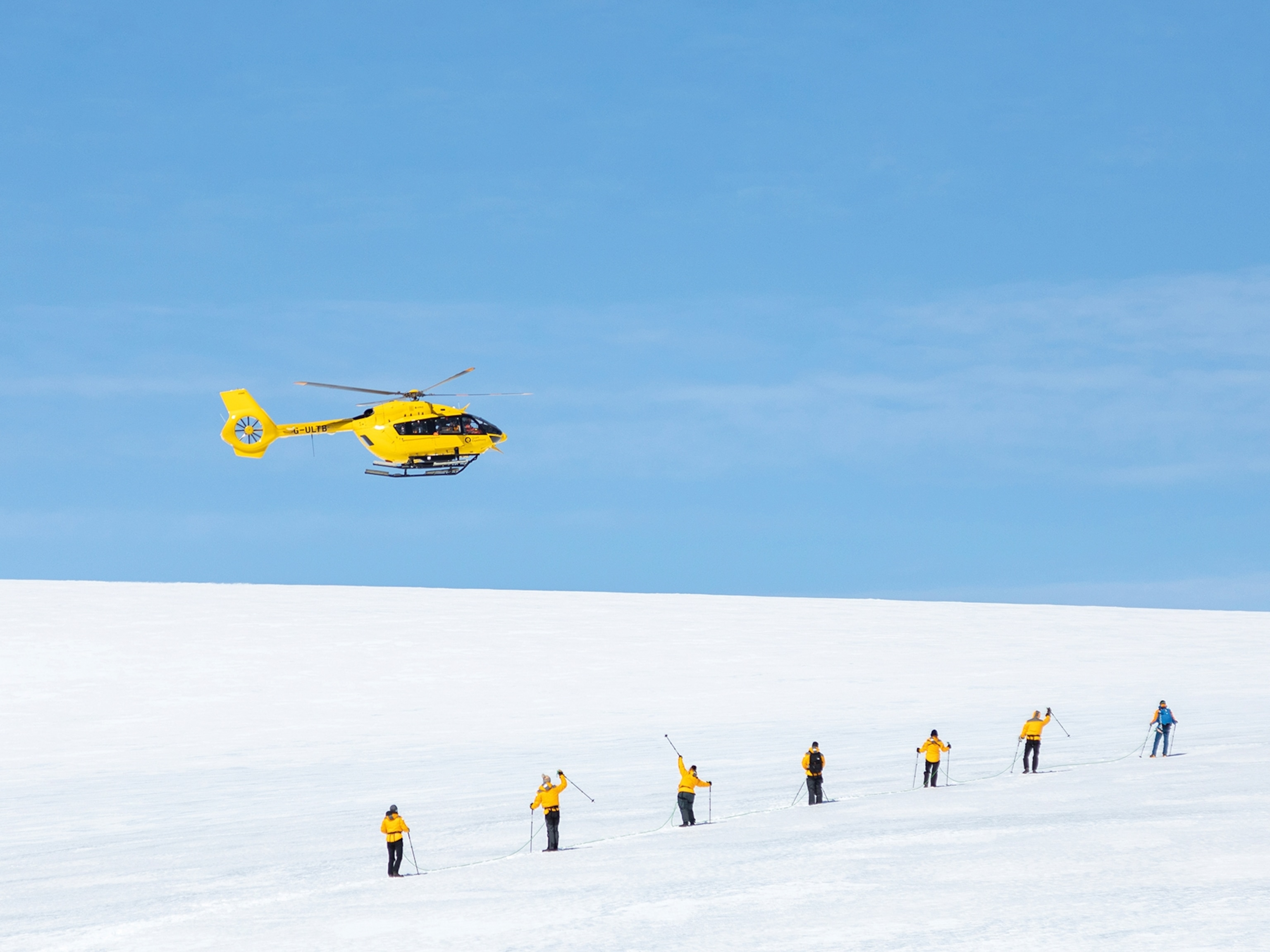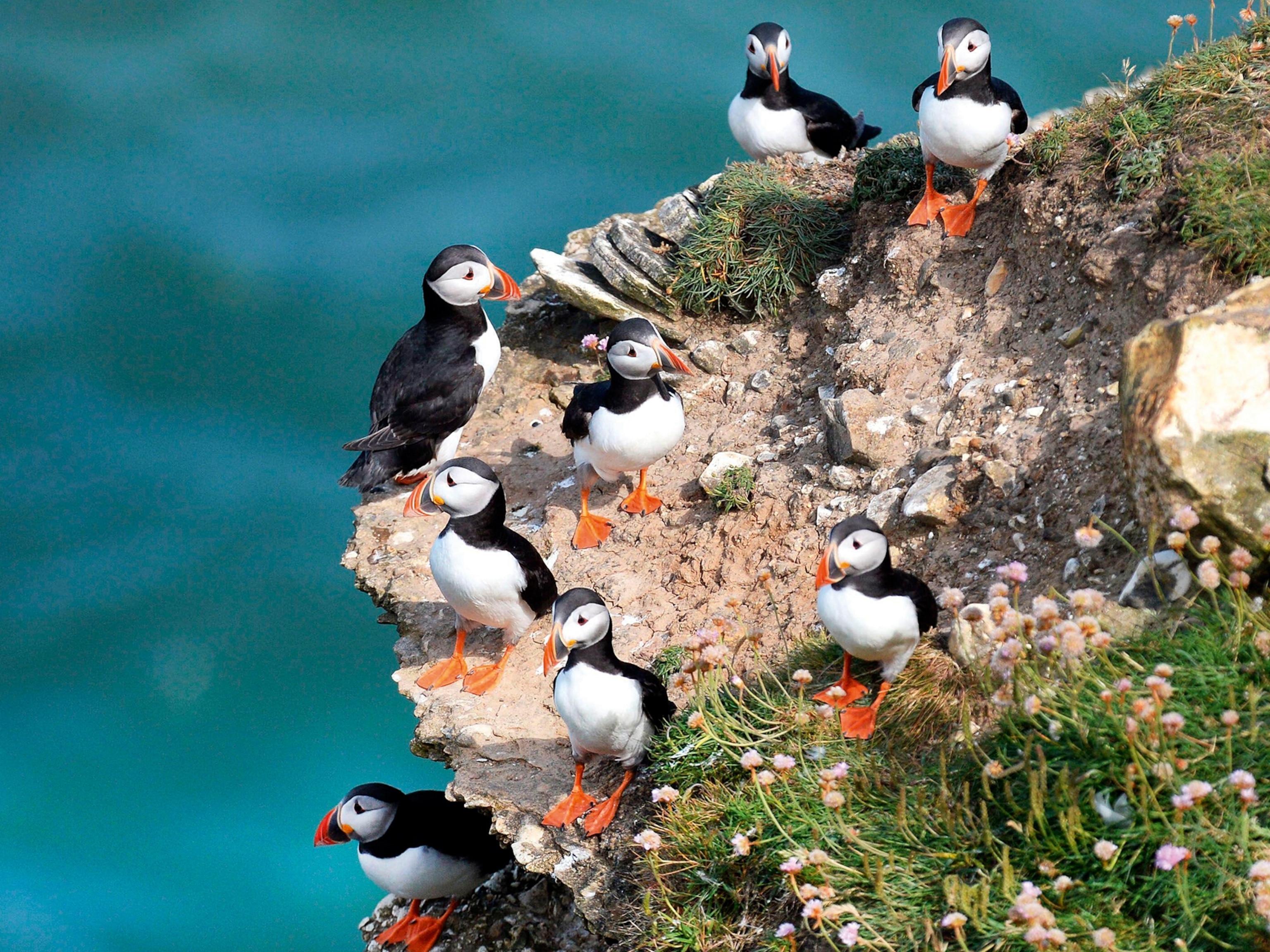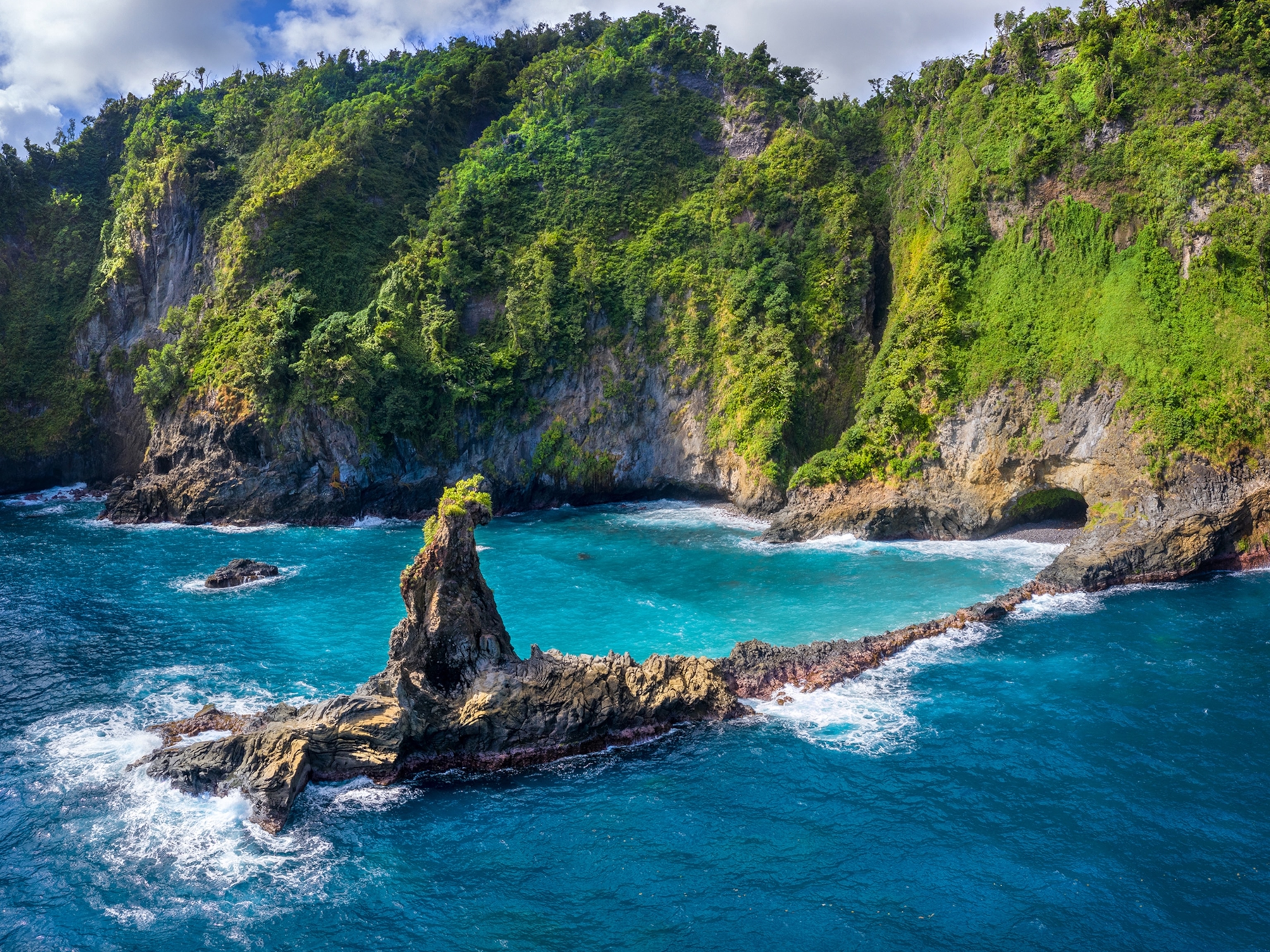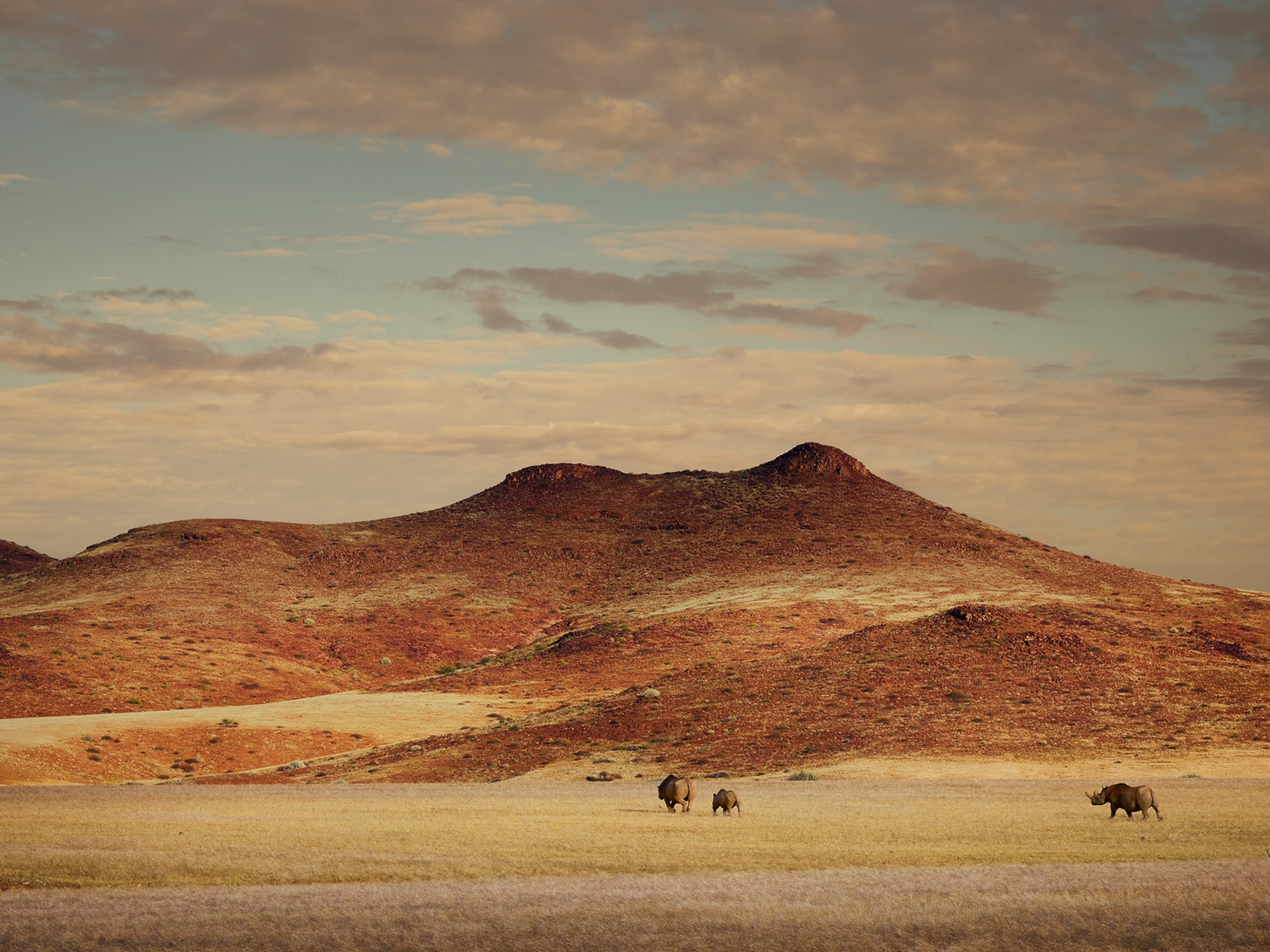My Own Private Falklands
With few crowds or restrictions, the remote Falkland Islands provide an intimate wildlife experience that offers an alternative to that of the Galápagos.
From the July/August 2008 issue of National Geographic Traveler
With few crowds or restrictions, the remote Falkland Islands provide an intimate wildlife experience that offers an alternative to that of the Galápagos.
By the time I reach Carcass Island, I've learned the secret to watching penguins in the wild: You have to act nonchalant. So, arriving at Leopard Beach to find some 200 Magellanic penguins shuffling about, I simply perch myself on a sand dune and wait. Before long, the knee-high birds get used to me and fearlessly wobble past, their black-and-white, tuxedo-style plumage molting off in feathery puffs of gray.
Carcass Island, a knob of land a mere six miles long and two miles wide, sits at the western end of the Falklands, an archipelago comprising 778 islands and islets 300 miles off the east coast of Patagonia. On my way to Leopard Beach, I've wandered the isle at will, inspecting a shipwreck at Ballast Beach, climbing the fog-shrouded summit of Mount Byng, trekking along the treeless spine of the island interior. Occasionally I stop to stretch out on the spongy, heath-like diddle-dee and enjoy a silence so complete it leaves my ears ringing. As remarkable as what is found here is what's not—crowds. At times, it seems as though I have the entire island to myself.
At Leopard Beach, I realize that the longer I sit still, the more species I see: stocky, brown-gray ducks, long-billed shorebirds, buzzard-like foragers, chubby little wrens, stripe-breasted geese, some approaching me close enough to touch.
But my attention keeps coming back to the penguins. When Charles Darwin visited the Falklands 175 years ago, he noted that the Magellanic penguin was known for its habit of throwing its head back and braying like a jackass. The famous naturalist stopped in the Falklands more than a year before his visit to the Galápagos. I've come here for similar reasons, namely, to experience the wildlife, but to do so in a self-paced way that's almost impossible to enjoy in the more celebrated island chain.
On paper, the British-administered Falklands group, about the size of Connecticut, shows little advantage. It has fewer endemic animal species than the Galápagos (which sit on the Equator), a chillier climate, and no giant reptiles. What's more, the Falklands have been out of the news since the British-Argentine war fought here in 1982. Darwin himself was less than effusive, characterizing the landscape as "desolate and wretched."
But sensibilities have changed, and with upwards of 100,000 people touring the Galápagos each year, measures to lessen their impact on the land have resulted in a visitor experience that can feel almost museum-like, confined to strictly demarked walking trails. By contrast, the larger and less trammeled Falklands, which host about 700 land-based visitors a year, allow travelers the chance to wander the terrain alone with nature and open to serendipity.
I've elected to explore the Falkland Islands by jeep, ferry, and small plane, overnighting in home-stay inns. I thus avoid the cruise-ship-based day-trippers—some 63,000 of whom stop here each year en route to the Antarctic.
I began my trip three days ago in the capital of Stanley, on East Falkland Island. Stanley, population 2,115, is a tidy village of backyard gardens and painted tin roofs. It's the only real town in the islands. From there, I've island-hopped westward, stopping first at Pebble Island to see the black-necked swans and swarms of rockhopper and gentoo penguins.
Now, on Carcass Island, as the sun begins to set on Leopard Beach, I hike the shoreline back to my base—a tree-shrouded farmhouse inn run by a couple who have owned the island since 1974. Along the way, I'm shadowed by a little brown songbird that swoops and flits above me as I walk. Every time I stop, it alights nearby and cocks its head at me, as if I'm the most fascinating creature it's ever seen.
At dinner, I find myself sharing Chilean red wine and roast Falkland goose with eight English bird-watchers, half of whom seem to answer to "Mike." I can hardly keep up with their ornithological chatter, and they pay me little mind until I mention the brown bird that followed me home.
"Light brown or dark brown?" one of the Mikes asks.
"Dark brown," I say. "With fairly even coloring."
"Sounds like a tussock bird," Mike's wife says. "When you see them, you know you're on an island that doesn't have any rats or cats. What else did you see?"
"Well, down near the water I noticed a brownish duck-like bird."
"Yellow-billed teal?" another Mike offers.
"It had more of an orange bill," I say.
"And it was kind of stocky. With bluish feathers on its back."
"Flightless steamer duck!" several of the Brits declare at once.
Our conversation continues like this—the birders diagnosing my bird sightings like surgeons weighing symptoms—for the rest of our meal. One of the Mikes marvels at how, around here, one can spot such a variety of birds without binoculars. "I've been birding all over the world," he says, "but it's rare to find a place where the local species are as tame and accessible as in the Falklands. At times I feel as if I'm cheating."
the next morning i rise early and head out to catch a boat across Byron Sound to Westpoint Island. I'm following the advice of a 70-ish lady I met at a bar back in Stanley. She drew me a map on a napkin and said, "Go to the cliffs along the western shore. You'll find a sight there you won't see anywhere outside the Falklands."
As the boat, an old metal-hulled fishing vessel, departs, a morning squall drives me into the wheelhouse with the stubble-chinned skipper, who, as it happens, is also named Mike. But then the sight of a hulking sea lion floating by pulls me back out onto the deck. From the bow I spot half a dozen Peale's dolphins, with their distinct charcoal and white coloration, pacing the boat. Before long a pair of smaller Commerson's dolphins joins their ranks, and the two species frolic together.
The weather breaks as we land on Westpoint, and Skipper Mike and I hop into his battered Land Rover bound for the western shore. There I see what the woman in the bar was talking about, a scene out of Dr. Seuss: Hundreds of magisterial, black-browed albatrosses perch atop their cone-shaped nests, quietly keeping watch over their downy chicks while—scattered amid the albatross nests—noisy rockhopper penguins bounce from rock to rock along the cliff face. Under two feet tall, with dark red eyes and disheveled yellow feathers poking out from their heads, rockhoppers look like the hipster punk rockers of the penguin world.
Back in the car, Skipper Mike drives me toward his homestead for afternoon tea. Along the way he notices some "woolies"—unshorn sheep—which, at this time of year, he says, should be "clippies." I offer to help round them up. Soon I find myself creeping across a field, trying to discern sheep logic as I watch the animals bolt in unexpected directions.
Falkland wildlife has been sharing its habitat with livestock since the first permanent settlers arrived in the 1760s. Darwin, writing in his Voyage of the Beagle about his 1833 visit, told of gauchos who hunted wild cattle with bolas and daggers. In that century, sealers and whalers almost wiped out native populations of their prey.
Still, over the years, the only known indigenous land mammal to go extinct in the Falklands has been the wolflike warrah fox, a critter so tame that Darwin forecast its demise decades before it was hunted out of existence.
Skipper Mike and I finally corral the woolies. Closing the gate behind us, we head down to the jetty to return to Carcass Island, where I have a morning flight back to Stanley.
The final leg of my journey takes me two hours from Stanley via four-wheel drive to Volunteer Beach. I arrive at the bleakly beautiful shore, reminiscent of other isolated stretches of the Falkland coastline, only to find the local equivalent of an Academy Awards gala under way.
Several dozen Brits and Americans are gathered like star-struck teens, photographing a nesting colony of regal, gold-throated king penguins. Holding the tourists back as they jockey for shooting position is the "velvet rope," in this case a ring of whitewashed stones set out by the local wildlife warden. The Gore-Tex-clad paparazzi click away as a flock of feathery Brad Pitts and Angelina Jolies casually poop, preen, and regurgitate fish into the mouths of their children.
Volunteer Beach is one of the few places on Earth where you can watch king penguins incubate their eggs, a 50-day process in which males and females alternate holding the egg on their feet. Yet the crowds this spectacle attracts illustrate the inherent contradiction of places like the Falklands or the Galápagos. Smaller crowds make for better wildlife viewing, but better wildlife viewing attracts large crowds.
Patrick Watts, a sharp-eyed, soft-spoken 63-year-old Falkland Islander who guides visitors to Volunteer Beach, says tourist hordes—which can amount to hundreds when cruise ships call—are a relatively new phenomenon here. "Not so long ago it was difficult to bring visitors to a place like this because there weren't many roads outside of Stanley," he says. "It took 14 hours of driving through peat bogs and sheep pastures to get here. New roads have shortened the time, so now cruise ship passengers can see the king penguins on a day-trip."
A further boom in cruise ship traffic could transform more parts of the Falklands, but Watts doubts the islands will ever get as crowded as the Galápagos. "The wildlife here is a huge attraction," he says. "But we're more isolated, and we don't have the reputation. Most people visit as part of an Antarctic cruise, and they don't stay long. And even high-traffic locations like Volunteer Beach have enough variety to keep large groups happy."
On this point, Watts is right: Hiking down the beach, away from the kings and the crowds, we pass Magellanic penguins lounging outside their packed-dirt burrows. Out by the water, where sub-Antarctic winds tear swirls of mist from the waves, I spot packs of orange-footed gentoo penguins wobbling up from the water. Gregarious and squatty, gentoos are known to build nests from small, carefully selected stones, which the males sometimes proffer to females, like fine jewelry, to aid in seduction.
Watts explains that penguins, too, were once threatened here by human exploitation. "Sealers killed them for oil in the 19th century," he says, squinting into the wind as gentoos toddle past. "They say it took eight penguins to make a gallon. As late as 1971 there were only 30 adult king penguins surviving at Volunteer Beach, but conservation efforts have brought those numbers up over a thousand."
Watts adds that the islanders have learned how to harvest penguin eggs—long a delicacy among natives—without affecting bird populations. "Penguin eggs used to serve as bartering currency," he tells me. "I grew up eating them. They aren't used for food much these days, but older people will occasionally collect some for the kitchen."
I can't bring myself to look at a penguin and see an omelet or a pint of oil. Rather, I find myself quietly giddy at the sight of two dozen white-bellied gentoos padding across the beach. Evolutionary biologists have noted that penguins' waddling gait reminds people of toddlers—and I'm still smiling when I climb into Watts's vehicle at the end of the day.
The best wildlife moments anywhere, however, are the unexpected ones. Stopping to open a gate on our way back to Stanley, I sense something watching me in this sprawling, treeless landscape. Looking up, I come face to face with a falcon-like caracara sitting on the fence post. The raptor doesn't flinch as I open the gate, and as Watts drives through I stare at the majestic bird leaning into the wind, staring back at me. That's the appeal of the Falkland Islands in a nutshell.
TravelWise: Falklands Essentials
The Basics
Entry requirements U.S. citizens need a valid passport, proof of travel insurance (including aeromedical evacuation coverage), sufficient funds for their stay, and a return ticket. For more requirements, go to www.falklandislands.com. Time Same as U.S. eastern daylight savings time. Money The Falkland pound (British pound also accepted); for conversion rates, go to www.oanda.com. Phone calls From the U.S., dial the international access code 011, the country code 500, and the five-digit local number.
- National Geographic Expeditions
Author's Picks
Deano's Bar, Corner of Dean and John Sts., Stanley; phone: 21296.
Falklands Brasserie, 3 Philomel St., Stanley; 21159.
Falkland Islands Museum, Holdfast Rd.; 27428.
Globe Tavern. Night spot frequented by tourists, soldiers, and locals. Crozier Place, Stanley; 22703.
Ken Greenland Tours. See historic sites related to the 1982 war in and around Darwin and Goose Green; 32255; darwin.h@horizon.co.fk.
Lafone House B&B. Highly recommended. Ross Road East, Stanley; 22891; arlette@horizon.co.fk.
McGill's Farmhouse Inn, Carcass Island; 41106.
Malvina House Hotel and Restaurant, 3 Ross Rd., Stanley; 21355.
For More Information
Falkland Islands Tourist Board
Penguin News. Community newspaper based in Stanley featuring local news, lore, and area activities.
Locals bought author Rolf Potts copious rounds in Deano's Bar in Stanley. The most recent of photographer Frans Lanting's books is Life: A Journey Through Time.

